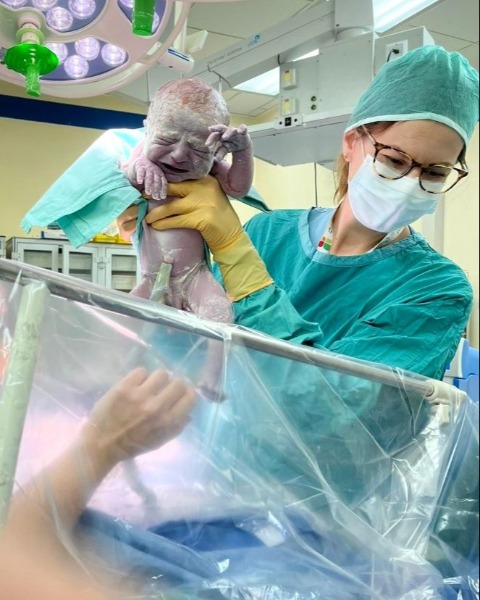Operative Obstetrics
Poster Session 3
(869) The Impact of Obstetrician’s Gender on Maternal and Neonatal Outcomes in Vacuum-Assisted Deliveries

Anat Pardo, MD (she/her/hers)
OB/Gyn Specialist
Helen Schneider Hospital for Women, Rabin Medical Center, Petach-Tikva
Ramat Hasharon, Israel- MA
Michal Axelrod, MD, MPH (she/her/hers)
Sheba Medical Center
Ramat-Gan, HaMerkaz, Israel 
Or Bercovich, BSc, MD
Helen Schneider Hospital for Women, Rabin Medical Center
Petach-Tikva, HaMerkaz, Israel
Inbal Navon, MD
Helen Schneider Hospital for Women, Rabin Medical Center
Petach Tikwa, HaMerkaz, Israel- SN
Shir Nahum Fridland, MD
Helen Schneider Hospital for Women, Rabin Medical Center
Petach Tikwa, HaMerkaz, Israel 
Noam pardo, BSc, MD (he/him/his)
MFM Fellow
Sheba Medical Center, Tel Hashomer
Ramat hasharon, HaMerkaz, Israel
Ohad Houri, MD (he/him/his)
Doctor
Rabin Medical Center
Tel Aviv, Israel, Israel
Hadas Zafrir danieli, MD
Resident
Helen Schneider Hospital for Women, Rabin Medical Center
Petach Tikwa, HaMerkaz, Israel- EH
Eran Hadar, Prof.
Rabin Medical Center
Petach-Tikva, HaMerkaz, Israel - SP
Sharon Perlman, MD
Helen Schneider Hospital for Women, Rabin Medical Center
Petach Tikwa, HaMerkaz, Israel
Primary & Presenting Author(s)
Coauthor(s)
Study Design:
Retrospective cohort study at a single tertiary center between 2012 and 2022 included 5328 VADs. The outcomes of 2659 VADs performed by women obstetricians were compared to 2669 VADs performed by men obstetricians. The primary outcome was failed VAD. Secondary outcomes included maternal complications (Post Partum Hemorrhage, blood products transfusion, and OASIS) and neonatal complications (5-min Apgar< 7, umbilical cord pH< 7.1, and NICU admission).
The groups were compared using demographic and clinical independent variables in a univariate and multivariate analysis
Results: Demographic characteristics did not significantly differ between the groups, except for body mass index (BMI) which was lower for mothers in the women obstetricians’ group (23.07±4.40 vs 23.30±4.27, p=0.045). There were no between-group variations for regional analgesia, indication for intervention, and neonatal birthweight. Women obstetricians used more often metal caps than men (86.6% vs. 84%, p=0.009). Failed VADs analysis displayed gender-based differences: women obstetricians exhibited lower rates of failure compared to men (1.7% vs. 2.8%; p=0.08). This association was further supported by multivariate analysis (OR 1.57, 95% CI 1.047-2.366) with p< 0.029. However, these differences were not associated with increased adverse maternal or neonatal outcomes. When analyzing the final mode of delivery, women obstetricians achieved higher rates of vaginal deliveries (0.3% vs. 0%), while men obstetricians had higher rates of cesarean deliveries (2.3% vs. 1.2%; p< 0.001) (Table 1)
Conclusion: Women obstetricians demonstrated a notably lower rate of failed VAD compared to their men counterparts. These findings highlight the necessity for additional research and targeted interventions to understand the underlying factors contributing to this gender-based discrepancy

